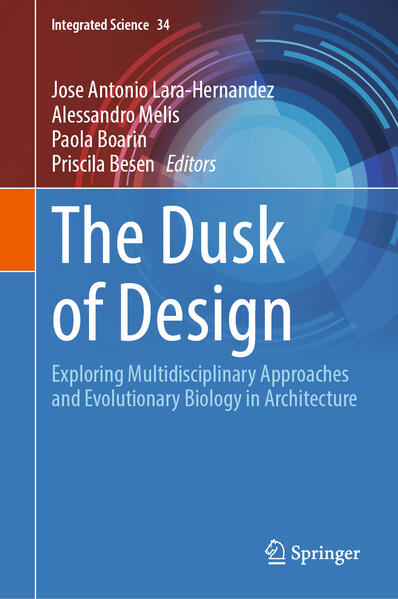
Sofort lieferbar (Download)
The Dusk of Design explores the intersection of evolutionary theories and architectural design. Drawing inspiration from the concept of exaptation in biology, the book argues that natural selection, as the most successful designer on our planet, thrives on the diversity, variability, and redundancy of creative structures. By transferring these mechanisms to architectural design, the book contends that we can cultivate more resilient and sustainable architecture and cities in the face of environmental crises.
This book seeks to illuminate the profound potential of multidisciplinarity by examining case studies from architecture worldwide. By exploring how evolutionary theories can explain various architectural phenomena, it aims to inspire architects, designers, researchers, and students to adopt a holistic and transdisciplinary approach to their work.
The book provides a clear and concise overview of evolutionary principles, demonstrating their relevance to architecture. It will showcase a range of case studies that highlight the application of evolutionary theories in solving architectural challenges, such as adaptive reuse, sustainable urban planning, and resilient design in the face of climate change.
Ultimately, "The Dusk of Design" aims to bridge the gap between biology and architecture, presenting a fresh perspective on how we can create more innovative, sustainable, and resilient built environments.
Inhaltsverzeichnis
Chapter 1 Beyond deterministic and human-centric design in architecture. - Chapter 2 The design of diversity: case studies. - Chapter 3 On designing exteriority from within through flux cities in public space. - Chapter 4 Title: enhancing women' s experiences in urban public spaces. - Chapter 5 The mayan solar. - Chapter 6 Favelas, exaptation and self-organised maps. - Chapter 7 Redundancy: from adaptation to aptation design. - Chapter 8 The interplay between exaptation and urban life: redundancy and informality in el houma. - Chapter 9 Reimagining informality: lessons from naples on growth, adaptability, and the value of incompleteness in urban planning. - Chapter 10 Enabling flexibility and residents agency in shaping social housing: case studies from south america. - Chapter 11 Public space and safety: access control a means for territorial reinforcement. - Chapter 12 Material-based computational design strategies. - Chapter 13 The possibility of transcribing trauma into architecture: exploring potential interdisciplinary research methods across architecture and criminology. - Chapter 14 Variability and design. - Chapter 15 Health in public space, micro_environments. - Chapter 16 Building health: the evolution of healthcare infrastructures through the lens of human evolution and social changes. - Chapter 17 The bricolage of transdisciplinarity. The nuanced concept of landscape resilience through a recombination approach. - Chapter 18 Exaptation in transport facilities: a cultural ecological perspective on motor parks as public spaces in yorubaland, nigeria. - Chapter 19 A stolen wall from the venice biennale. - Chapter 20 Mapping the demilitarized zone (dmz) as a proving ground: imagining the impossible. - Chapter 21 Conclusion chapter.
Produktdetails
Erscheinungsdatum
13. Januar 2025
Sprache
englisch
Seitenanzahl
308
Dateigröße
17,45 MB
Reihe
Integrated Science
Herausgegeben von
Jose Antonio Lara-Hernandez, Alessandro Melis, Paola Boarin, Priscila Besen
Verlag/Hersteller
Kopierschutz
mit Wasserzeichen versehen
Produktart
EBOOK
Dateiformat
PDF
ISBN
9783031768675
Entdecken Sie mehr
Bewertungen
0 Bewertungen
Es wurden noch keine Bewertungen abgegeben. Schreiben Sie die erste Bewertung zu "The Dusk of Design" und helfen Sie damit anderen bei der Kaufentscheidung.










